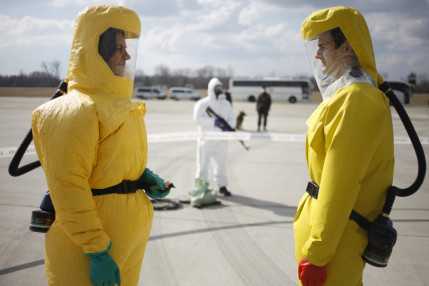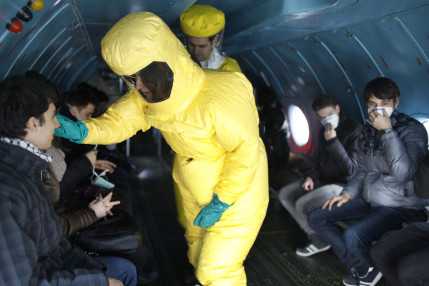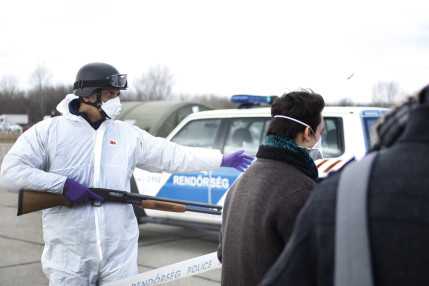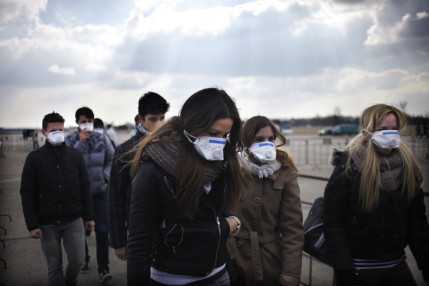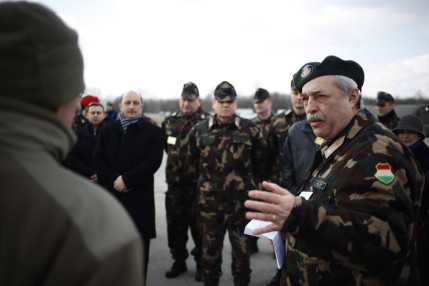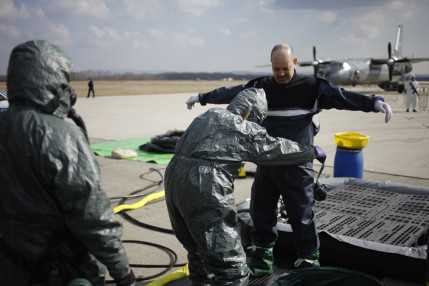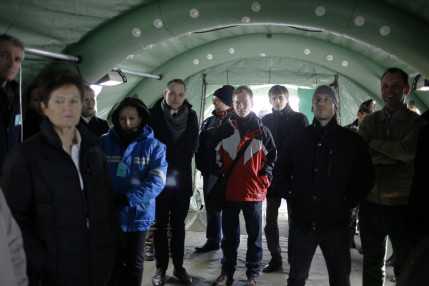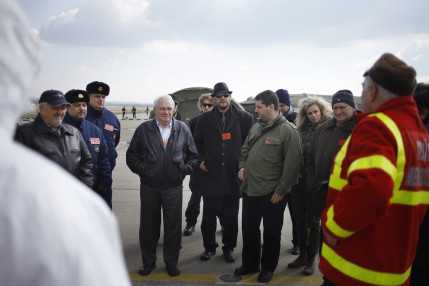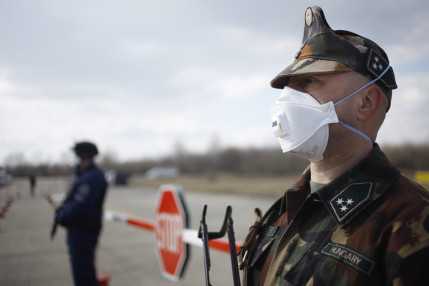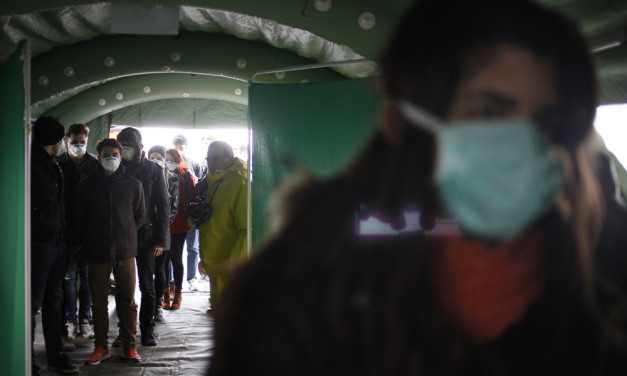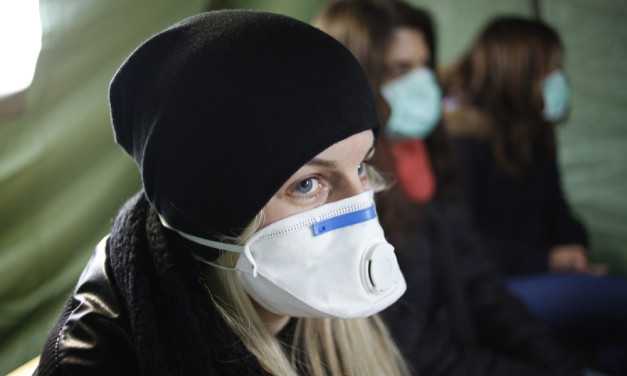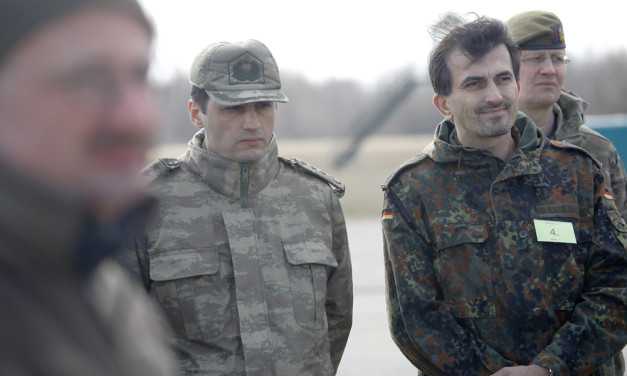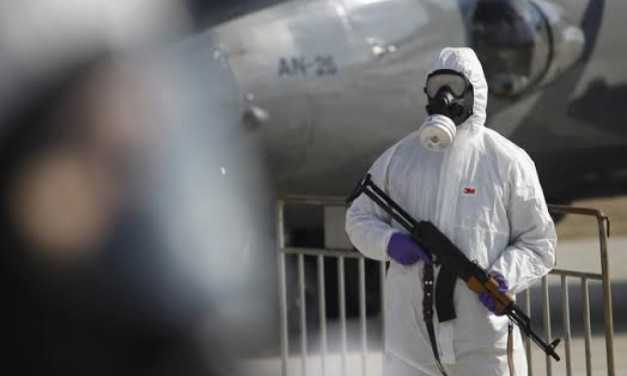Attention: Risk of Epidemic!
Szöveg: Gábor Kálmánfi | 2015. március 12. 9:00Smooth cooperation among several organizations is the only way to manage a health crisis effectively – this was one of the lessons learned on the VIP day of NATO’s Crisis Management Exercise 2015 (CMX 2015) which took place at the HDF Pápa Air Base in Hungary on Friday, March 6. High-ranking leaders of the Hungarian Defence Forces, the Ministry of Human Resources and the Veszprém County Defence Committee as well as members of the Pápa-based Heavy Airlift Wing (HAW), the NATO Center of Excellence for Military Medicine (NATO MILMED COE) and the Budapest Military Attaché Corps (BMAC) observed how the crisis situation was handled in a fictitious scenario.
Galéria
As it turns out, after first plane landed on the air base, one of its passengers was taken to hospital where he died of an infectious disease of unknown origin. By the time the second transport aircraft arrives, the isolation ward of a mobile medical aid post has already been set up at the aerodrome. According to the exercise scenario, it functions as quarantine where the Hungarian Defence Forces – in cooperation with the police and the health care organizations – can properly deal with the arising situation.
This situation was being simulated at the HDF Pápa Air Base, where local students – in the role of evacuees from the crisis zone – were waiting for the medical specialists who first set up triage to assess the passengers’ health condition.
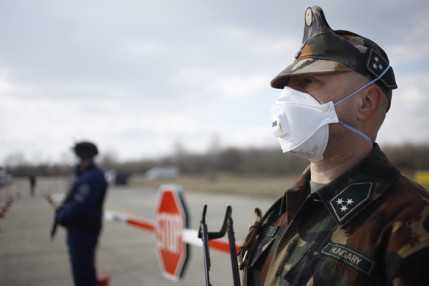
Lt. Dr. Katalin Meglécz (MD), Chief Medical Officer, Public Health and Epidemiology Service, Hungarian Defence Forces told us that, given that the civilian passengers are staying in a military area, the quarantine was being operated by the Hungarian Defence Forces Public Health and Epidemiology Service in accordance with the rules applying to this situation. “After a first examination, the healthy ones are transferred to a monitoring zone and the ill to a medical facility where they receive proper treatment. It is important to make sure that the quarantine is adequately protected by military and police forces, because in a real-world situation – which may last for months in a given case – nobody is allowed to enter or leave the closed area, the lieutenant emphasized.
Brig.-Gen. Dr. József Tokovicz, Director-General, MoD Defence Administration Office told us that this phase of the exercise exactly fits into the whole scenario of the CMX 2015. There has not been such an exercise in Hungary yet, in which all civil, law enforcement and military organizations involved in defence administration jointly model the decision-making mechanisms and tactical procedures for bringing a potential similar outbreak under control on governmental, regional and local levels. This time the Hungarian Defence Forces had opportunity to test the process which was made up of the capabilities of several organizations. “In my assessment, this exercise is very successful. The invitees of the VIP day – the professional superiors, the members of the National Defence Administrative Coordination Inter-Agency Working Group and the representatives of county defence committees – had opportunity to watch the joint system of procedures for the civil authorities, the police and the Hungarian Defence Forces in operation, which may be used in the interest of each other and the country", the Director-General said.
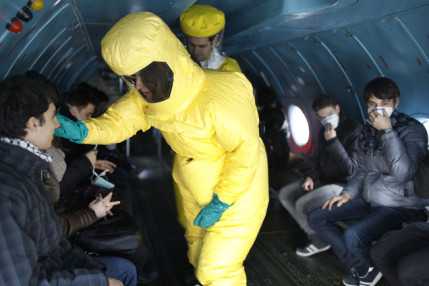
In addition to nominated personnel from the HDF Military Medical Centre and the HDF Pápa Air Base, the exercise involved a subunit of the HDF 93rd “Petőfi Sándor" CBRN Defence Battalion, the HDF “Görgei Artúr" NBC Area Control Centre and an An–26 cargo plane and air crew from the HDF 59th “Szentgyörgyi Dezső" Air Base. In view of the complexity of the task that required the coordination of several necessary capabilities, the organizations preparing and supporting the exercise included the HDF Joint Force Command, the HDF Medical Centre, the HDF “vitéz Szurmay Sándor" Budapest Garrison Brigade, the HDF Pápa Air Base, and civil medical authorities from the Ministry of Human Resources, the Institute for Emergency Health Care Supply Management, the Joined St. Stephen and St. Ladislaus Hospital – Clinic, the Office of the National Chief Medical Officer and the National Epidemiology Centre.
In cooperation with the Veszprém County Defence Committee, the task involved experts from the Veszprém County Policy Administration Service of Public Health, the county police headquarters and the disaster management directorate, and the students of the “Petőfi Sándor" and the “Türr István" secondary school (Pápa) as role-players. The technical infrastructure was provided by the Military Film Studio of the MoD Zrínyi Non-profit Ltd.
Photo: Veronika Dévényi
